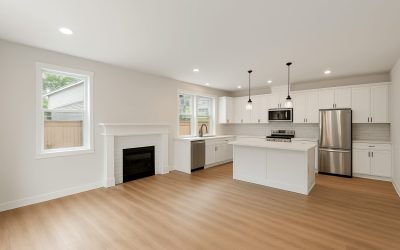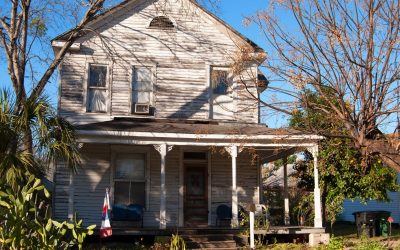Finding out your home has been deemed uninhabitable can be quite shocking. If it’s your primary residence, you’ll need to find somewhere else to live until it’s repaired. As a landlord, you have an obligation to your tenants, which can sometimes hurt your pockets.
You’re reading this blog for one of two reasons:
- You’re a landlord whose property was recently deemed uninhabitable by your local authorities.
- You’re a tenant whose property was recently deemed uninhabitable, and you want to know your rights
To find your answer quickly, click the link below that best describes your situation.
What Is An Uninhabitable Home?
The simplest definition of habitability – “Habitable,” means fit to live in; “uninhabitable” means not fit to live in. However, each state has a different (but similar) definition of what makes a dwelling uninhabitable.
Let’s analyze California’s landlord and tenant responsibilities for habitability and repairs. This is according to the California Department Of Consumer Affairs.
California Landlords’ And Tenants’ Responsibilities For Habitability And Repairs
- Effective waterproofing and weather protection of roof and exterior walls, including unbroken windows and doors.
- Plumbing facilities, including hot and cold running water, are in good working order, and connected to a sewage disposal system.
- Gas facilities are in good working order.
- Heating facilities are in good working order.
- An electrical system is in good working order, including lighting, wiring, and equipment.
- Clean and sanitary buildings, grounds, and appurtenances (for example, a garden or a detached garage) free from debris, filth, rubbish, garbage, rodents, and vermin.
- Adequate trash receptacles in good repair.
- Floors, stairways, and railings are in good repair.
- In addition, the rented property must have all of the following
- A working toilet
- Wash basin
- Bathtub or shower.
- The toilet and bathtub/shower are in a ventilated, private room.
- A kitchen with a sink that cannot be made of an absorbent material (for example, wood).
- Natural lighting in every room through windows or skylights.
- Unless there is a ventilation fan, the windows must be able to open at least halfway.
- Safe fire or emergency exits leading to a street or hallway. Stairs, hallways, and exits must be kept litter-free. Storage areas, garages, and basements must be kept free of combustible materials.
- Operable deadbolt locks on the main entry doors of rental units, and operable locking or security devices on windows.
- Working smoke detectors in all units of multi-unit buildings, such as duplexes and apartment complexes. Apartment complexes also must have smoke detectors in common stairwells.
Let’s Not Confuse Uninhabitable With Condemned
Again, this varies by state, but landlords in some states and jurisdictions may be required to obtain a certificate of occupancy, permit, or business license. States that don’t require routine inspections or rental agreements basically put the onus on the renter to police their landlord. If a problem arises, a tenant can file a report with the inspector’s office if contacting their landlord doesn’t work.
An inspection may show that your property is either uninhabitable or condemned.
Uninhabitable properties are usually in dire need of repairs and unlivable, but structurally sound enough to remain standing. A condemned property is considered unsafe and must be torn down or extensively renovated before it can be made habitable again.
This can be because of a fire that destroyed part of the property or a hole in the roof from a tree. Those two examples are a big difference between having no working toilets.
What Happens As a Landlord
As a landlord, your property may be deemed uninhabitable by your local authorities after a report made by your tenant. As we mentioned when discussing the Landlords’ Responsibilities For Habitability And Repairs, you cannot collect rent until minimum requirements are met.
A house being deemed uninhabitable comes with immediate consequences.
- For nonurgent problems that are not a threat to health and safety, you’ll usually have 14 or 30 days (depending on your local laws).
- Essential repairs, such as a sudden lack of hot water or a broken window, should be dealt with immediately, typically within 24 to 72 hours.
What Happens As a Tenant
If there’s a problem with your rental unit, you should first send a formal repair request to your landlord. In addition to sending in a formal request, take photos and video to document the damage. Give them 30 days to make the necessary repairs.
If that doesn’t work, you can repair and deduct, meaning you can make the repairs yourself and withhold the difference from your rent.
You can do this if:
- You’ve already given your landlord a reasonable amount of time to fix the issue
- The issue is a threat to habitability
- The repair costs no more than one month’s rent
Call your code compliance and/or health department if you don’t want to make the repairs yourself. An inspector will assess your property and give a citation if they deem it uninhabitable. They’ll then give your landlord a timeline to fix the issue or face consequences.
In this situation, do not withhold rent. Landlords can use this as an excuse to not fix issues with your unit.
As a last resort, you can break your lease without facing consequences.
Selling An Uninhabitable House
If you’re a landlord or homeowner with an uninhabitable property, you should repair the property ASAP. The longer you wait, the more costly the repairs will become. If you have no desire to keep the home or can’t afford the necessary repairs, selling is a good option.
When you sell an uninhabitable property, you have a few considerations.
- You may have difficulty finding a traditional buyer for your property if it requires repairs. Most buyers want a move-in-ready property to live in.
- If you find a buyer, selling the property as-is will require you to drop the price tag to seal the deal.
- If you’re on a financial clock because you’re facing foreclosure or need to pay off debt, ask yourself this question. Can I afford to wait for the repairs to finish, or do I need to sell now?
If you need to sell ASAP, your best option is to sell to a real estate investor willing to buy your uninhabitable property.
The Bottom Line
A home deemed uninhabitable falls short of the basic standards of living. This poses significant challenges to landlords and tenants.
For landlords, the discovery that your property is uninhabitable requires immediate attention and repair and impacts your ability to collect rent and fulfill your obligations to your tenants.
On the other hand, tenants face the task of ensuring repairs are made, potentially having to resort to formal requests, repairs, deductions from rent, or even code compliance interventions.
If you’re either party in this situation, hopefully, you can resolve things cordially and professionally!








